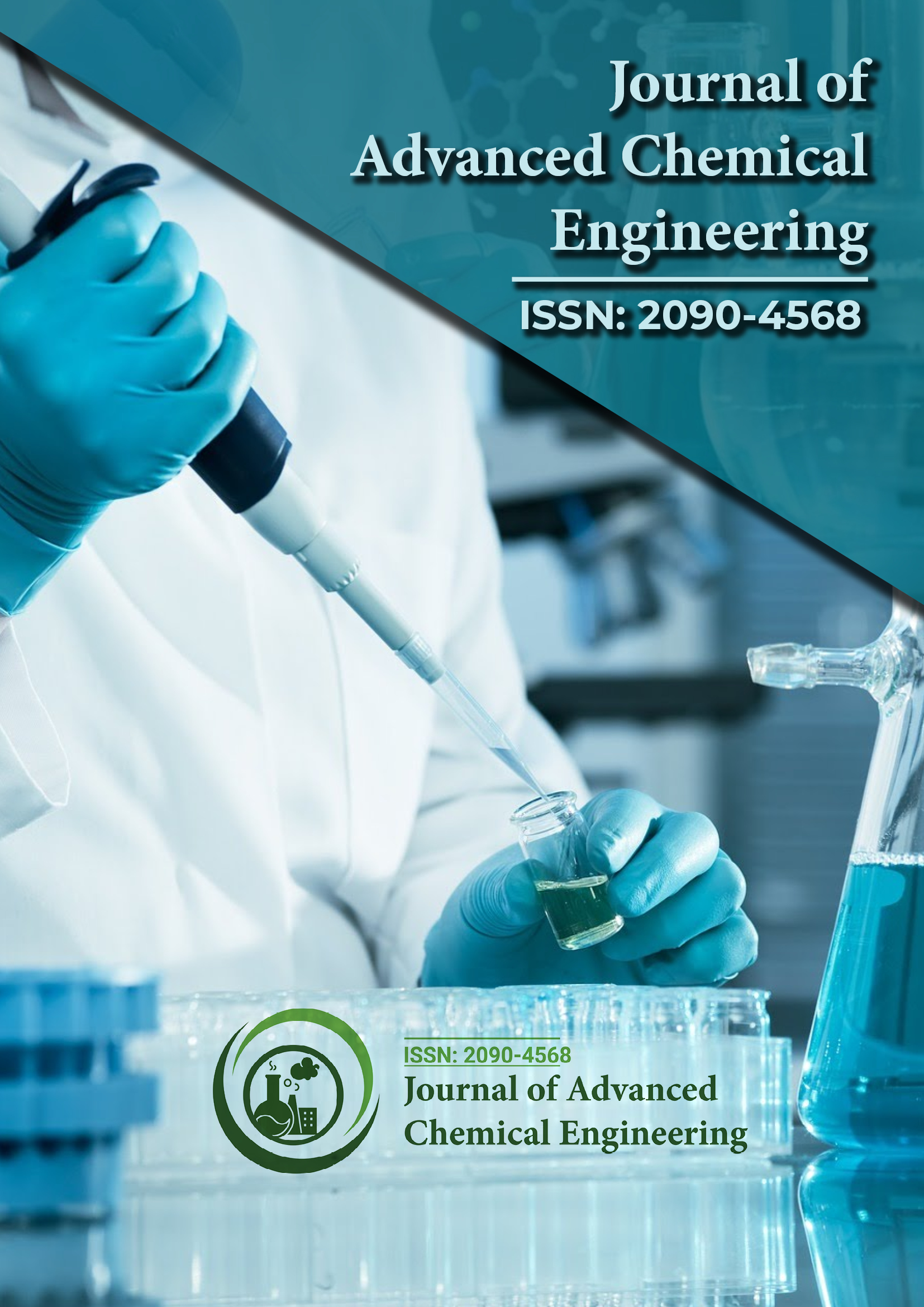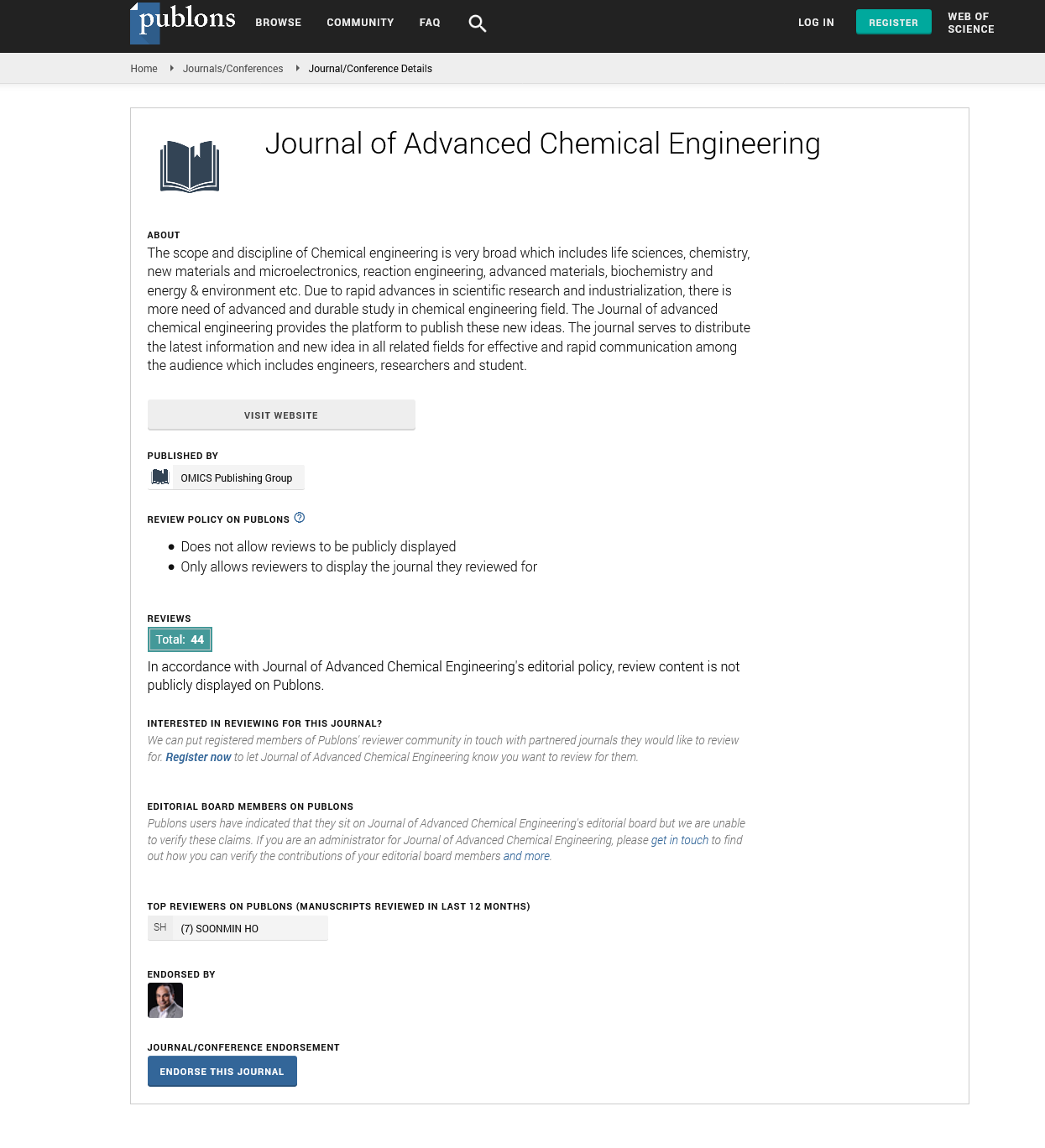Indexed In
- Open J Gate
- Genamics JournalSeek
- Smithers Rapra
- RefSeek
- Directory of Research Journal Indexing (DRJI)
- Hamdard University
- EBSCO A-Z
- OCLC- WorldCat
- Scholarsteer
- Publons
- Geneva Foundation for Medical Education and Research
- Google Scholar
Useful Links
Share This Page
Journal Flyer

Open Access Journals
- Agri and Aquaculture
- Biochemistry
- Bioinformatics & Systems Biology
- Business & Management
- Chemistry
- Clinical Sciences
- Engineering
- Food & Nutrition
- General Science
- Genetics & Molecular Biology
- Immunology & Microbiology
- Medical Sciences
- Neuroscience & Psychology
- Nursing & Health Care
- Pharmaceutical Sciences
Commentary Article - (2022) Volume 12, Issue 6
Fertilization of Prototypic Food Production in Food Processing
Valencia Augusto*Received: 13-May-2022, Manuscript No. ACE-22-17109; Editor assigned: 18-May-2022, Pre QC No. ACE-22-17109 (PQ); Reviewed: 09-Jun-2022, QC No. ACE-22-17109; Revised: 15-Jun-2022, Manuscript No. ACE-22-17109 (R); Published: 21-Jun-2022, DOI: 10.35248/2090-4568.22.12.232
Description
Chemical engineering has a vast scope in food processing. They work in different sectors like manufacturing, pharmaceuticals, healthcare, food processing, biotechnology, and other environment and safety industries. The relationship between chemical engineering and the food industry is about enhancing the food production. Every day, chemical engineers create and discover new pesticides, fertilizers, and herbicides. Chemical engineers can credit various innovations in the food industry.
Most modern fertilizers stem from a chemical engineering pioneered by Fritz Haber in 1908. Haber, a chemist, engineered a technique to synthesize ammonia through a reaction between hydrogen and nitrogen. He was awarded N obel P rize for Chemistry in 1918. He designed and scaled up a new successful process for cost-effective commercial-scale production of ammonia in nitrogen fertilizers by working with “Carl Bosch”, an industrial chemist. The “Haber-Bosch” process is considered one of the most monumental chemical engineering achievements because of its direct impact on sustainable global food production.
In food industry, there are various principles which use the phenomenon of chemical engineering, they contribute to food industry by fulfilling our demands and inventing techniques that enhance the quality and increase the shelf life of the food. They come up with technologies which protect us against food-borne diseases. Food engineering, became an academic discipline in the year 1950s, is a professional and scientific multidisciplinary field. It applies principles of engineering to food manufacturing and operations, which includes the processing, production, handling, storage, conservation, control, packaging and distribution of food products.
• In effect, they make vital contributions to the food supply chain.
• Designing and packaging of food inclusive of storage equipment and systems.
• Scale-up of prototype food processes, machinery, and equipment.
• Product/process research and development.
• Regulation and protection of the public health.
• Engineering and technical sales.
For more than 100 years, the chemical engineers came to know how to conceive, design, test, and scale up revolutionary foodprocessing techniques. Because of their efforts we have exotic fruits and vegetables, fresh meats, seafood, and dairy products always to be available on our local grocery shelves. We additionally depend on convenient processed foods to meet our nutritional and culinary needs.
Applications
Fruit and vegetable production contribute to the food industry by finding ways and inventing pesticides and fertilizers that protect and help to enhance food production.
Food packaging has a significant role in packaging. They also developed advanced materials and techniques that can be used for packaging. It is one of the most critical trends in the food industry, and chemical engineers are responsible for it.
Protecting Perishable foods credit for handling and safeguarding perishable foods and they come with new sterilization techniques that can help to preserve food against spoilage.
Innovation in food on formulating new products by mixing and processing different industries and also modifications in ingredients of the food we eat and change for the better flavors.
Safe food handling practices, if food safety is incredibly important because it helps in preserving the food against foodborne diseases and responsible for inventing techniques that can help in handling process and can help us increasing the safety of the food.
Throughout the different stages of processing and storage, chemical engineers play an essential role in ensuring food safety. Chemical engineers have been intimately involved in developing vacuum packaging. The food is placed into a gas-impermeable bag, so that air is vacuumed out, and the bag is sealed. This process reduces the oxygen content inside the bag so, that microbes cannot survive.
Later improvements on vacuum packaging include Controlled- Atmosphere Packaging (CAP) and Modified Atmosphere Packaging (MAP) both represents monumental chemicalengineering breakthroughs in the field of food processing. Another important contribution to food safety and convenience is chemically sterilized brick packs. These multilayer packages is widely used to package of juice, milk, tomato sauce, and countless other products to protect the contents from spoilage without the need for refrigeration. Ingenious brick-shaped package is typically constructed from high-quality paperboard, plastic, and aluminum.
Conclusion
From production to delivery, they included in the planning and implementation of comprehensive food safety efforts. Consumers also have crucial responsibility of knowing and practicing safe food handling procedures to protect themselves and their families. Government officials should develop and support partnerships and joint activities with the food industry.
Citation: Augusto V (2022) Fertilization of Prototypic Food Production in Food Processing. Adv Chem Eng. 12:232.
Copyright: © 2022 Augusto V. This is an open access article distributed under the terms of the Creative Commons Attribution License, which permits unrestricted use, distribution, and reproduction in any medium, provided the original author and source are credited.

